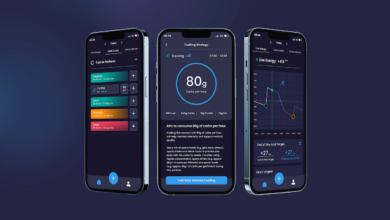Predictive Analytics Market to Reach US$37 Billion by 2028

Predictive Analytics market prediction: Unraveling growth trajectories and strategic imperatives
Predictive Analytics Market Prediction: Nowadays, businesses are availing predictive analytics in order to garner insights and optimize the process of decision-making. Predictive analytics sector has been a success story, as the market has experienced rapid growth. The market forecasts also projected a stellar growth in the years ahead. The Predictive Analytics market size was valued at US$14.21 billion in revenue in 2023 and is anticipated to reach US$37.33 billion by 2028, with a CAGR of 21.31% over the forecast period. In this article, the core drivers of this growth are discussed as well as the coming trends of this analytics industry.
The driving forces behind Predictive Analytics market growth:
Increasing Demand for Data-Driven Decision-Making
Different sectors of business are beginning to realize the instrumentality of data in knowing their potential clients, the market trends, and the competitors. This leads to a shift towards data driven decision making.
Business Process Optimization
The issue of efficiency and effectiveness have made the organizations realize the optimization necessity for their business processes. Predictive analytics can bring big changes into the business, as it not only leads to faster processing and cost reduction, but also improves customer relationship marketing, lowers the risks, and identifies the frauds.
Customization and Scalability
One of the many strengths of predictive analytics solutions is that they can handle the issue of customizing and scaling very well. These solutions can be customized to suit different businesses. By the same time they would go in tandem with small businesses as they grow and plan for the future. Also, predictive analytics appears to be particularly effective in situations of energy consumption optimization, thus it is not surprising that it’s becoming not a luxury for many.
Technological Advancements
Latest developments in technologies, mainly machine learning and artificial intelligence, are the biggest players that have revolutionized predictive analytics capabilities. In turn, the implementation of these innovations enhances the chances of accurate forecasts through the analysis of large and sometimes even complex datasets.
Increasing Adoption Across Industries
Predictive analytics is on the rise and one can see its vast usage across a broad range of industries for example retail, banking, healthcare and agriculture. Businesses use data analysis technologies for different purposes like forecasting demand, increasing trade promotion and doing behavior analysis. This factor contributes to market growth and innovation.
Cloud-Based Solutions
Cloud computing, which emerged at the leading edge of advanced technology, dramatically altered the predictive analytics field. It enables high scalability, elasticity and cheaper service. With cloud-based predictive analytics capabilities, businesses can access highly scalable analytical tools and technology without investing in internal infrastructure and achieve adoption at all types of enterprises from the biggest to the smallest ones.
Emerging Trends:
Augmented Analytics
AI-infused form of predictive analytics, known as augmented analytics, is another trend in the industry. The data preparation, analysis, and insights generation are being automated through augmented analytics and hence, any business user can get enough knowledge to make the most of the data.
Prescriptive Analytics:
Unlike predicting analytics, which is the initial step in achieving desired future-outcomes, prescriptive analytics pushes the boundaries by giving a direction on what the best decisions to take are in order to obtain the desired results of an organization. Such an easy-to-use dashboard with deep analytics gives an organization a real chance to take right decisions based on the forecasts that help to eliminate issues and to take advantage of the opportunities.
Explainable AI:
As IC-based predictive models become more widely used, the need for transparency and interpretability turns from a nice-to-have to a necessity, nowadays. Explainable algorithms try to increase predictive analytics trustworthiness, by giving information about how models generate their predication and leading the decision-making processes and comply with the regulator.
Conclusion:
The future of predictive analytics market tends to generate great potential owing to the increasing demand for data-driven decisions and business process optimization. Going forward, with predictive analytics becoming more and more at the core of strategic planning, augmented analytics, prescriptive analytics, and explainable Artificial Intelligence alongside will be the trends to watch. These trends will define the predictive analytics landscape of the future, enabling businesses to discover areas of new opportunities.




